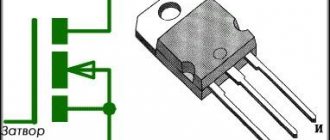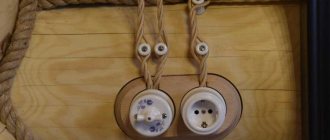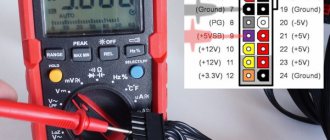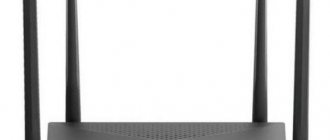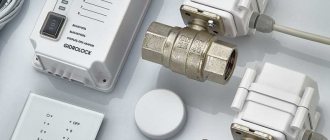Content
- Which UPS to choose for your home: single-phase or three-phase?
- Kits with high-capacity external batteries 5 kW - is it a lot or a little?
- Three phase kits. Power 3/5 kW per phase
- Main differences
- Single-phase and economical OFF-Line UPSs
Excess electricity can be sold
Any owner of a private home can sell excess generated electricity to the network. The volume of its delivery to the network cannot exceed 15 kW. It can be generated either by renewable energy sources (RES) - using the sun or wind, or by fuel generators. Combined solutions are also possible, combining, for example, a diesel engine and a wind turbine.
The procedure for payments for electricity transferred to the network is simplified as much as possible. The settlement occurs at the end of each month, just like ordinary settlements between citizens and guaranteed electricity suppliers. You won’t earn much from this, but the payback for private generation systems is accelerating.
First of all, let's decide: do you need a single-phase or three-phase UPS for your home?!
If the input (input) is single-phase, then the uninterruptible power supply must also be selected as single-phase.
The question arises if the input is three-phase. It would be a mistake to answer unequivocally that three-phase is needed. You, dear Buyer, will overpay for the device itself (three-phase units are more expensive), overpay for installation (installation is also more expensive) and will receive a fault-untolerant system, which will also cause trouble in operation in the future.
Reason: UPS 3/3 monitors the presence of voltage in all three phases; in the event of an accident in one phase and the battery energy is exhausted, all three are de-energized. If one of the phases is overloaded, all others are also switched off. Well, in the event of a breakdown or planned maintenance, all consumers in the house are left without protection. Three-phase systems use one battery bank and this is the only plus.
Conclusion: A simple, reliable, fault-tolerant system can be made from three single-phase UPSs. But in this case you will have to make three battery banks; to save money, they can be made different. But there is more of a responsible load, less of a less necessary one.
Exception: If there are three-phase consumers in the house, then a three-phase UPS must be used, or they must be excluded from the uninterruptible power supply circuit. As a rule, the main three-phase consumers are an oven and an electrically heated sauna. It is common sense to refuse to bake a turkey in the oven during an accident at a substation and not to sit in a sauna.
Three-phase circuits are used in production - for CNC machines, laser cutters, in laboratories for precision instruments, in medicine - for diagnostic equipment (tomographs, cardiographs, MRI).
In private houses, if the previously listed devices are not installed in them, THREE-PHASE UPS IS NOT NEEDED!
Advantages and disadvantages of autonomous home power supply systems
In order, as they say, to outline the horizons of the opportunities provided, but on the other hand, to somewhat “ground down” the overly rosy, “projector” moods, it makes sense to first briefly familiarize yourself with the general advantages and disadvantages of autonomous power supply systems at home.
So, the following speaks in favor of
- Provided that the correct professional calculations are carried out, the project is competently drawn up and its high-quality implementation, the owners of a country house will no longer have to deal with the “whims” of local electrical networks. This refers to cases of sudden loss of voltage or strong surges that threaten to damage household appliances or tools. A well-functioning system works like clockwork, and home appliances are safe.
Accidents on power lines, power surges and other troubles - the owner of an autonomous power plant is insured against all this.
- Problems with possible power limits for connecting to networks and volumes of energy consumption go away. Accordingly - and with payment at established tariffs. The owner is free to equip his device with any devices within the operational capabilities of his energy system, that is, to create any level of comfort.
- Equipment used to generate electricity, as a rule, has an impressive margin of reliability and rarely fails. Naturally, with its correct operation and regular maintenance.
- If you think big and take into account the experience of using home power plants in Western European countries, you can not only fully satisfy your own electricity needs, but also sell its surplus. For this purpose, there are special programs for interaction with companies in the energy sector. Naturally, such an approach would speed up the return on costs and even turn our own “power unit” into a profitable endeavor.
The “green tariff” system, when the owner of a power plant begins to sell excess generated energy to the state, will certainly be of interest to many.
True, to reach such a level requires not only the implementation of a carefully thought-out project with very significant start-up costs, but also the passage of a number of bureaucratic procedures and technical examinations. Nevertheless, such a direction in the “private power industry” certainly has considerable potential for future development.
Now let’s take a closer look at the shortcomings of an autonomous power supply system.
Tired, lazy, very cold, then - no excuses are accepted, no one will restore the system’s functionality for you.
- It has been said more than once, but - we repeat, the starting investments both for the development of the project and for the acquisition of the necessary set of equipment, its installation and debugging, can be very impressive. And the operating costs can be considerable. And it would be wrong to expect a quick payback.
- All risks, including material ones, are borne by the potential owner of the power plant. This once again shows how carefully the project should be thought out and worked out.
- The owners bear full responsibility for the operation of the equipment, its timely maintenance, appropriate care, and compliance with all safety requirements. If the system fails and the house is left without electricity, there is no one and no need to complain. More precisely, no one bothers you to seek technical support from specialists - but this will be exclusively at your own expense.
- Carrying out regular preventive measures (and without this there is no way) will also require additional costs, since their implementation requires a professional approach. The situation can be aggravated by the fact that houses with an autonomous power plant are quite often located at a considerable distance from large centers. That is, you will have to bear the transportation costs to call specialists.
So, anyone who has the idea of transferring their possessions exclusively to an autonomous power supply should think through everything ten times, calculate, weigh everything “pro & contra” before starting to invest in the implementation of such a large-scale project. And don’t expect immediate benefits - the payback can take 10 years or more. And this despite the fact that the equipment itself also has some, albeit considerable, but still limited service life.
In addition to those listed, types of generating equipment different in operating principle also have their own advantages and disadvantages - they will be discussed in the relevant subsections of the publication.
What energy sources can be used for autonomous power supply?
Here the division into two groups is quite obvious.
- The first includes electric generators that have a power drive and use one of the types of fuel as a source of external energy - liquid (gasoline or diesel fuel) or natural gas.
- The second group includes generator sets that are powered by completely free, natural energy sources. Wind generators, solar panels and hydraulic systems fit this definition.
Now let’s take a closer look at these sources of electricity.
UPS for home. Kits with high-capacity external batteries
UPS kit for home HPS30 5kW +4 batteries 100ah each + cabinet
UPS kit Hiden HS20-5048 5kW+4*100ah+cabinet
for home Stark 5000 INV with 4x100Ah battery
UPS 5000W On-Line + 4x100Ah Leoch.
5 kW - is it a lot or a little?
When choosing the kit you need, consider:
- The UPS is placed in a break in the power supply circuit of the entire house and in the “operation from the network” mode it will be loaded in total by all the switched on load, and its power must withstand it! Otherwise, everything that you can turn on at the same time (don’t forget about the lawn mower, electric grill and hammer drill) will all be connected to the UPS. Obviously, in the event of a power failure, unnecessary devices will not be used, but the rest of the time, large currents will flow through it. Therefore, with a single-phase connection, the choice of 5-6 kW is needed primarily for operation in normal mode, and in the “battery power” mode, 500-1500 W will actually be used for the really necessary equipment (boiler, refrigerator, pump). And powerful low-frequency UPSs cope with this task perfectly.
- There is no need to count on long-term autonomous operation from the backup power system of electric heaters, water heaters, and air conditioners. This is a waste of money - operating a 3 kW heating element from batteries for 1 hour will cost 400 Ah (four 100 Ah batteries). A generator can handle this task better and cheaper.
Three phase kits. Power 3/5 kW per phase
three-phase UPS kit for home 9kW 3*3kWt+3 batteries 100ah each
three-phase UPS kit for home 9kW 3*3kWt+6 batteries 100ah each
Smart UPS kit for home 1-2-5kWt+6 batteries 100ah each
If you take a flexible approach to solving the problem of uninterruptible power supply, you can significantly reduce the cost. And at the same time increase the reliability and degree of protection of equipment. This requires knowing where everything is turned on in the house and in what phase the boiler, pumps, sockets and lighting “hang”. If such information is available and it is reliable, then we suggest using not identical UPSs in terms of power, but different ones, combining power consumers into groups:
- The first group, the most important, is heating. Gas boiler with circulation pumps, gas valve and all control electronics. Typically, the power of this system is no more than 500 W, and the requirements for power supply quality are increased. Gas boilers cannot tolerate voltage surges and to protect them, they need On-Line class devices with a power of up to 900 W, but double conversion, which will provide 100% protection against voltage surges, plus two batteries with a capacity of 50 to 100 Ah. Thus, the boiler will have its own battery bank, which will not be used by any other electrical consumer in the house. View optimal solutions for powering and protecting heating boilers.
- The second group, borehole pumps, drainage pumps, refrigerators, microwave ovens, coffee machines, everything that turns on occasionally, but at the same time has high starting currents. For this group you need to install the most powerful UPS (3-6 kW), with a battery of at least 100 Ah. Here, battery capacity is limited only by budget.
- The third group is light. The opportunity to save money comes from using LED lamps. With a total possible power of 1000 W, a powerful inverter is not needed, and the battery is sufficient for up to 100 Ah.
Thus, all three groups will have different batteries, different UPS power, and an accurate calculation will save up to 40-50% compared to the kits above!
Determining the Best Energy Source
Choosing an alternative energy source for autonomous power supply to a residential building is a very important and responsible moment that requires a serious approach.
The most popular and most common options include:
- generators running on diesel fuel or gasoline;
- solar panels;
- batteries of large volume and power;
- hydroelectric systems;
- wind energy converters.
Each source has its own unique characteristics and features. Owners should familiarize themselves with them in advance and, based on this information, determine the best option for a system that can satisfy all the electrical needs of a private residential building.
What is the difference between a UPS for home and a UPS not for home?
When calculating and selecting an uninterruptible power supply system, for example, for a server, the power and the fact that the equipment consumes the declared power around the clock are clearly known. The calculation of autonomy turns out to be accurate. In the case of a country house, everything is much more complicated:
- First of all, the different nature of the loads . In a country house there are also powerful consumers, such as a borehole (submersible) pump, a dishwasher, a washing machine, an electric oven in a stove, microwaves and kettles, lawn mowers and other electrical tools. At the same time, they have and operate low-power equipment, which is most sensitive to voltage drops.
- Uneven distribution of power consumption. high simultaneous switching ratio . What does it mean? Let’s assume a situation where at night only the heating circulation pump works in the house and sometimes the refrigerator turns on, the result is approximately 45-200 Watts. And in the evening, for example, December 31st. Everything works: the pump pumps water, turns on for 3-5 minutes, this is 600-1000 W, in the stove - the grilled turkey “eats” 1.5 kW, the kettle is microwave, and the machine also washes and the ladies actively use a hairdryer (another + 1200 W) . Plus lighting, a 400 W vacuum cleaner (should be clean by the New Year). In total, once a year there is a simultaneous switching on of 6-9 kW of mixed load. The power of the system must be designed for this peak moment, otherwise you will have to celebrate the holiday in the dark by candlelight.
In summary: the main differences in the requirements for home UPSs are:
- High overload capacity (large power reserve). This important parameter depends on the type of inverter. An inverter (converter) is the part of the UPS that is responsible for converting the voltage from the batteries to 220 volts. LF - allow a double overload within 2-5 seconds, for HF overload is unacceptable, especially sharp, such as borehole pumps give to the network.
- Economical. Working 24 hours and 365 days a year, an uninterruptible power supply for a home should consume a minimum amount of energy; let’s calculate: on average, a 10 kVA ON-Line system takes on 60 W in normal mode. Without taking into account recharging the batteries, we will assume that the batteries are fully charged. We multiply, 60W*24*365=525600 W or 525 kW of electricity. Which, translated into money, equals 2500-3500 Rubles. It is desirable to have an IVF mode.
- The output signal shape is sine. Because The powered load contains pumps (inductance). Learn more about output waveforms.
Time for autonomy. Three optimal options:
- If there is a generator with automatic self-starting, the battery life is considered to be equal to the time it takes to start the generator plus 2-3 minutes for stabilization of the rotation speed and voltage. Usually 5-10 minutes. This time is provided by powerful 6-10 kVA UPSs with internal batteries. They will perfectly compensate for the voltage dip when switching to power from the generator and will not allow sudden surges and impulse noise during switching.
- If you have a generator without autostart, the requirement for battery life increases and amounts to 1-3 hours. Only UPSs with external batteries of medium capacity can cope with this task.
- If there is no generator, backup power systems with external batteries, but of large capacity, are installed.
The battery life depends on the capacity of the connected batteries.
It is impossible to accurately calculate the time during which the uninterruptible power supply will provide power to the connected load, because In the house, the main power-hungry consumers work sporadically, and it is impossible to predict whether at the time of a power outage the washing machine will work in heating mode or in spin mode or will not work at all. Usually, and this is correct, only those consumers are taken into account that operate without human intervention: a heating boiler, a well and drainage pump, a refrigerator, emergency lighting and a video surveillance system. The most basic mistake of a buyer of a UPS for his home: not taking into account the mode when the uninterruptible power supply operates from the network and powers all consumers through itself.
In order not to delve into the above technical details, send us a request-specification specification, we will select the equipment for you.
Wind power plants
Man has been using the colossal energy of moving air masses (wind) since ancient times. Suffice it to recall sailing ships or, for example, windmills. It has also found application in wind energy, and in some countries this industry has literally been put on an industrial basis.
Wind turbines are also used to provide electricity to private homes.
In fact, such an installation is a conventional generator, on the rotor axis of which an impeller with blades driven by air flow is installed. Alternatively, rotation is transmitted to the rotor axis through one or another kinematic circuit (gearbox) - this does not change the meaning. And the location of the impeller axis can be either horizontal or vertical.
The layout of the wind generator can be horizontal (on the left in the figure) and vertical.
What can be said about the advantages of a wind power plant?
- The energy source is completely free.
- The operation of the power plant is not accompanied by any emissions into the atmosphere.
- There are technologies for self-manufacturing power plants, for example, using conventional electric motors or even just powerful neodymium magnets.
There are more shortcomings, and they are quite significant.
- The wind installation is also very dependent on the prevailing weather.
- In order to catch a good wind, sometimes you have to raise the windmill to a considerable height, which complicates the already difficult installation.
- The operation of such a station can be accompanied by very unpleasant sound effects.
- You shouldn’t expect too high a return from a home windmill – we’ll look at this issue a little more closely later.
- The cost of ready-made wind stations is very high, and one cannot expect a return on investment if one relies only on wind energy.
Wind power should, in principle, only be seriously considered as an option if the average annual wind is at least 4-5 m/s. Otherwise, such a station will not bring any tangible benefit at all.
Map of the approximate distribution of average annual wind speed indicators in Russia.
This indicator is derived from the results of long-term meteorological observations, taking into account both maximum values and completely windless days. Thus, it allows you to calculate with a sufficient degree of reliability the production of “wind” electricity for a certain period: a week, a month, a year, etc. The diagram map shows only approximate values, but it is not difficult to find out the specific values for your locality - just contact your local weather service.
But the technical characteristics of wind generators usually include another indicator - the design speed, which usually exceeds the annual average by 1.5 - 2 times. It will be wrong to rely on it when making calculations for the future. Rather, it shows the rated power of the generator at the optimal rotor speed.
To make sure that it is hardly worth relying only on “wind” electricity, it is enough to calculate its possible generation.
It should be correctly understood that no matter how perfect the windmill itself or the generator connected to it is, the amount of energy is still determined by the area from which it will be “removed.” In the case of a “classical” horizontal windmill, this area is limited by the area of the circle described by the rotating blades. And wind energy is directly dependent on the speed of flow and air density. That is, you can’t “jump over your head.”
Interestingly, the number of blades does not matter (installations even with one blade are produced). On the contrary, when there are more than three blades, negative aerodynamic moments appear, reducing the overall performance of the system.
Prices for popular gasoline power plants
So, there is a formula that takes into account the mentioned parameters, as well as the coefficient of use of wind energy, the efficiency of the generator itself (as a rule, it is not higher than 0.85) and the gearbox. The efficiency of the gearbox is also usually no higher than 0.9, but if the rotation from the impeller to the generator is transmitted directly, then it can be taken as unity.
We will not give the formula - it is included in the calculation algorithm of the online calculator we offer:
Wind Generator Predicted Power Calculator
Go to calculations
It won’t be difficult for the pipe to carry out an independent calculation to verify the very low energy production rates. And this is also for ideal conditions, when there are almost no natural or artificial wind disturbances. And without the inevitable losses in the generated energy conversion system.
Since both wind and solar energy sources require approximately the same hardware to become a full-fledged power plant, they are usually combined into one system with common control
It is clear that a wind power plant, as it is highly dependent on external conditions, must be equipped with an energy storage and conversion system. According to this criterion, it is not much different from the solar one. Therefore, very often they are even combined into a common system, thereby significantly increasing its operational capabilities.
Wind power source - pros and cons
Installing a wind generator is a rather controversial decision that requires a special approach to planning and assessing performance and profitability. More information about this, as well as about the possibility of making a wind generator with your own hands , can be found in a special publication on our portal.
The cost of a UPS with battery in various configurations for a country house is given below:
Single-phase, economical OFF-Line class UPSs with external batteries, high overload capabilities and powerful chargers
Hiden Control HPS30-3024 (TOR) 3000 W
Power 3000 W. Off-Line UPS with battery charging current of 45 Amps.
EP3000 PRO 6kWt 24vDC
Power 6 kW. Off-Line UPS without battery. Pure sine.
EP3000 PRO 5kWt 24vDC
Power 5 kW. Off-Line UPS without battery. Pure sine.
Stark Country 5000 INV
Power 5000 W. Off-Line. There is no battery. SB controller.
EP3000 PRO 4kWt
Power 4 kW. Off-Line UPS without battery. Pure sine.
OFF-Line systems deserve special attention. Their advantages include high efficiency, efficiency and operation with a small number of batteries. The battery capacity is up to 600 Ah.
The power of the UPS listed below is from 5 to 9 kW. If this is your first time trying to figure it out and choose a UPS, then please note that VA - volt amperes, are different from W - watts. It is customary to indicate the power in VA in model names, but in the house for which we are selecting a UPS, half of the load is clearly inductive (pumps, electric drives) and it is necessary to take into account the “cosine Phi” of 0.7. In addition, do not forget about inrush currents.
Single-phase ON-Line class UPSs with internal batteries for a period of 5-10-15 minutes, as a buffer between the generator
UPS 6 kVA (5.4 kW) Hiden UDC9106S 6kVA
Power 5400 W. On-Line. Pure sine.
Calm ST1110SL
Power 8000 W. On-Line. Battery 16x9Ah. Pure sine.
Calm ST1106SL
Power 5400 W. On-Line. Battery 16x9Ah. Pure sine.
UPS 10 kVA (9 kW) L900Pro-S 10kVa Lanches
Power 9000 W. On-Line. Pure sine.
Lanches L900Pro-S 6kVa
Power 5400 W. On-Line. Pure sine.
Single-phase UPSs with internal batteries have advantages in compactness (size). Everything is located in one “rack/tower”. As a rule, the autonomy time is 5-15 minutes, depending on the load. The autonomy time cannot be increased. Such UPSs are designed to protect against dips (surges) and short-term power outages, successfully compensate for temporary power outages when switching to power from a backup generator and eliminate surges in voltage amplitude when switching back.
Single-phase ON-Line class UPSs with external batteries for a period of 15 minutes or more, as an autonomous power source
UPS 10 kVA (9 kW) L900II – H 10kVA Lanches
Power 9000 W. Without battery. On-Line. Pure sine.
UPS 6 kVA (5.4 kW) L900II-H 6kVA Lanches
Power 5400 W. On-Line. There is no battery. Pure sine.
Stark Country 6000 Online 12A
Power 4800 W. On-Line. There is no battery. Pure sine. Charge current 12A
Stark Country 10000 Online
Power 8000 W. On-Line. There is no battery. Pure sine.
Single-phase UPS for working with external batteries. It is necessary to calculate, purchase, and install external batteries. Quantity from 16 to 20 pcs. thereby achieving a reserve for a time of more than 10-15 minutes. Structurally, they consist of the UPS itself, which performs the functions of management, conversion, network monitoring, a high-power charger and one or more battery racks or cabinets with high-capacity batteries.
UPS 10-15 kVA three-phase 3/3
UPS 15 kVA three-phase L900Pro-S 3/3 Lanches
Power 13.5 kW. On-Line. There is a battery. Pure sine.
UPS 15 kVA three-phase L900Pro-H 3/3 Lanches
Power 13.5 kW. On-Line. There is no battery. Pure sine.
UPS 10 kVA three-phase L900Pro-H 3/3 Lanches
Power 9 kW. On-Line. There is no battery. Pure sine.
UPS 10 kVA three-phase L900Pro-S 3/3 Lanches
Power 9 kW. On-Line. There is a battery. Pure sine.
Requirements for home independent complexes
Before purchasing equipment to supply your home with electricity, you should calculate its required volume, which will cover the needs of all household appliances and other household electrical devices. To do this, the total power of all available electrical consumers is calculated. The most common of them are:
- refrigeration and freezer compartments;
- heating system;
- air conditioner;
- Appliances;
- pump (for delivering water from a well to the building);
- power tool.
The basic power of any unit can be found out from the instructions supplied with it by the manufacturer. This indicator is individual for different devices. But all devices certainly require a stable supply of electricity; voltage drops are unacceptable for them.
The data obtained is summarized, as a result of which they find out approximately how many kilowatt-hours an autonomous electrical system should produce daily. It is recommended to increase this number by 20-25% in order to have a small margin to increase energy consumption.
The total energy consumption in the house depends on the electrical appliances used, their models, as well as the constant number of residents Source dagzhkh.ru
Video description
Solar panels.
Myths and reality. Many of the disadvantages of such power plants are easily resolved. Problems with the placement of this equipment completely disappear if installation is organized on the roof. It does not take up useful space, and nearby non-residential buildings and garden trees do not create shading. Considering the significant cost of the system, it is important to note: modern solar panels have a huge resource, so they manage to pay for themselves before their useful life ends.
In addition, you need to take into account: such a source of autonomous power supply at home implies fairly frequent charging and discharging of the battery. For this reason, its resource is rapidly decreasing. To have the necessary supply of electricity at night, the battery will have to be changed frequently.
Solar panels installed on the roof of a house do not take up useful space and are highly efficient Source termico-solar.com
Storage device
Electricity storage devices for home and garden are a system consisting of two functional units that perform a specific task:
- Battery pack. Designed to store energy from an industrial network, fuel or wind generator, solar panel or water turbine.
- Autonomous inverter. In standby mode, it recharges the battery to the specified value. In the event of a power failure, it switches to the mode of a DC-AC voltage converter (220 V or 380 V), feeding it into the internal network of the home.
Based on their location, devices are divided into built-in, free-standing, floor-mounted and wall-mounted.



